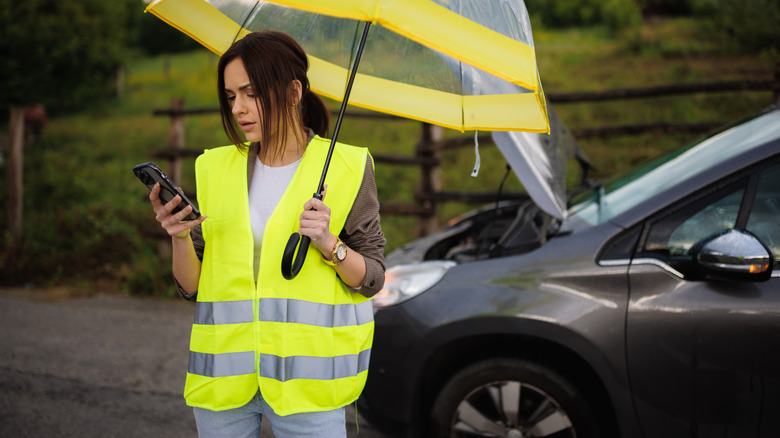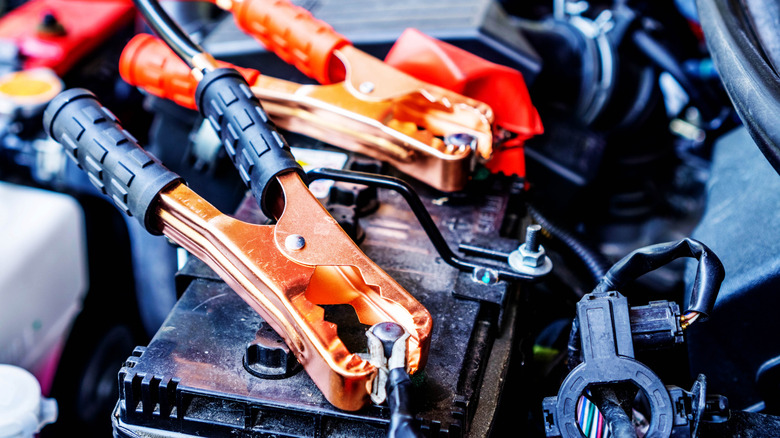Can You Use Jumper Cables In The Rain?
Car batteries seem to die at the worst times. Perhaps it's a cruel joke of the universe or just bad luck, but many of us have had to jumpstart our cars in the dark and the cold. It's a stressful experience that can be made even more stressful if it's raining. Fortunately, you can safely use jumper cables in the rain — as long as you follow some extra precautions.
We're usually taught that mixing water and electricity is a bad idea, so it's natural to assume that using jumper cables in the rain could lead to a nasty shock. However, car batteries don't have a high enough voltage to electrocute you. As long as you follow the proper steps to jumpstart a car battery, you won't get zapped. Instead, the bigger danger when jumpstarting a car in the rain is the risk of water causing a short-circuit or surge to the car's electrical system, which could damage electrical components. The risk of such an accident is low, but you can eliminate it altogether by remembering which parts of the jumper cables and the battery to keep dry.
As you go through the steps, keep in mind which parts of the electrical circuit are "live" and ensure that they're dry. These parts include the terminals of both batteries and all four clamps of the jumper cables. Also, make sure you attach the "dead" end of the negative (black) cable to a dry part of the vehicle's chassis, such as a bolt within the engine bay. That being said, don't stress yourself out trying to ensure everything is dry as a bone. As long as the aforementioned live components are free of water, you can safely proceed with jumpstarting your battery.
Tips for keeping your jumper cables dry in a downpour
If it's raining cats and dogs, keeping those jumper cables dry is nearly impossible. Fortunately, only the metal clamps at the ends, called the "leads," need to stay dry, while the rubbery jacketing is waterproof and can get wet. Thus, try to keep the leads protected from the rain while you move them between the hoods of the vehicles. If they do get wet during the transfer, shake them off and dry them under the hood or an umbrella before attaching them to the battery terminals.
The hood of the car should provide enough cover to shield the battery terminals from the rain. If wind is blowing rain into the engine bay, position the cars to face away from the direction of the rain, or drape an umbrella or coat to block the rain. You should also ensure the cars are on a level surface and away from standing water, such as puddles.
During a heavy rain, dampness and humidity are inevitable. Car batteries are generally waterproof, but it's important to keep their terminals dry. That's because water can act as a conductor when it forms a connection between the battery terminal and another conductive material, like the bare metal of the engine block. Therefore, slightly damp components don't have a significantly high risk of causing a short-circuit or spark. You should always err on the side of caution, but that doesn't mean you should let the rain stop you from getting back on the road.

